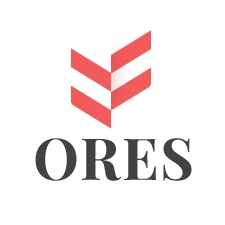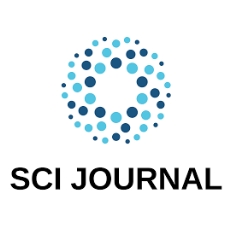- Research Article
- DOI: https://doi.org/10.61336/appj/22-2-45
A Case-Based Study on the Effectiveness of Embospheres as Embolizing Agent in the Treatment of Symptomatic Uterine Fibroids
- Volume 22, Issue 2 (2023)
- Pages: 218-222
- Open Access
- Download
Yosra Sahib Flayyih\(^{1}\), Mundher Mudhafar\(^{2,*}\) and Nada Alharis\(^{3}\)
\(^{1}\)Al-Sader Teaching City, Najaf, Iraq.
\(^{2}\)Jabir ibn Hayyan Medical University. Najaf, Iraq.
\(^{3}\)Faculty of Medicine, University of Kufa, Iraq.
- Received: 22/09/2023
- Accepted: 22/12/2023
- Published: 30/12/2023
Introduction: Embolization of the uterine arteries (UAE) has been approved as a minimally invasive technique for the treatment of uterine fibroid and maintaining fertility; different agents are used in this technique; embospheres have nowadays become widely used in many centers. Aim: assess the effectiveness and safety of Embospheres as Embolizing agents in treating symptomatic uterine fibroids among Iraqi patients. Methods: This was a mixed retrospective-prospective study conducted at Ibn Sina Hospital; the study included 17 patients who were managed and followed up during the period 2018 – 2020 included 17 Iraqi women with symptomatic uterine fibroids and were managed with embolization of uterine arteries using Embosphere as an embolization agent followed for six months by MRI to monitor changes in size & IV contrast enhancement. Results: The mean age of the patients was 39.5 (range: 266-49) years. Single fibroids were reported in 70.6% of the cases and multiple fibroids in 29.4%, the median number of fibroids was significantly reduced after UAE, (P<0.05) and the median size reduced by more than 50%, from 11 cm to 5 cm after UAE, (P<0.05). More than 70% of fibroids decreased in size, and 17.6% disappeared. After UAE, during the follow-up period, 17.6% of women got pregnant safely. Unfortunately, two patients did not get the benefit. Conclusions: Embospheres were safe and effective as an Embolizing agent in treating symptomatic uterine fibroids with good outcomes and no serious adverse effects or complications.
- Keywords: Embolization, Embolization agents, Embosphere, Uterine fibroid
Copyright © 2023 the Author(s). This is an open access article distributed under the terms of the Creative Commons Attribution License http://creativecommons.org/licenses/by/4.0.
References
- Okolo, S. (2008). Incidence, aetiology and epidemiology of uterine fibroids. Best Practice & Research Clinical Obstetrics & Gynaecology, 22(4), 571-588.
- Al Ansari, A. A., Al Hail, F. A., & Abboud, E. (2013). Malignant transformation of uterine leiomyoma. Qatar Medical Journal, 2012(2), 16.
- Giuliani, E., AsSanie, S., & Marsh, E. E. (2020). Epidemiology and management of uterine fibroids. International Journal of Gynecology & Obstetrics, 149(1), 3-9.
- Levy, B. S. (2008). Modern management of uterine fibroids. Acta Obstetricia et Gynecologica Scandinavica, 87(8), 812-823.
- Donnez, J., Arriagada, P., Donnez, O., & Dolmans, M. M. (2018). Emerging treatment options for uterine fibroids. Expert Opinion on Emerging Drugs, 23(1), 17-23.
- Stewart, E. A., Laughlin-Tommaso, S. K., Catherino, W. H., Lalitkumar, S., Gupta, D., & Vollenhoven, B. (2016). Uterine fibroids. Nature Reviews Disease Primers, 2(1), 1-18.
- Stewart, E. A., Laughlin-Tommaso, S. K., & Levine, D. (2019). Uterine fibroids (leiomyomas): Epidemiology, clinical features, diagnosis, and natural history. UpToDate, 22.
- Wise, L. A., & Laughlin-Tommaso, S. K. (2016). Epidemiology of uterine fibroids-from menarche to menopause. Clinical Obstetrics and Gynecology, 59(1), 2.
- Al-Hendy, A., Myers, E. R., & Stewart, E. (2017). Fibroids: Uterine Fibroids: Burden and Unmet Medical Need. In Seminars in Reproductive Medicine (pp. 473). Thieme Medical Publishers.
- Herv\'{e}, F., Katty, A., Isabelle, Q., & C\'{e}line, S. (2018). Impact of uterine fibroids on quality of life: a national cross-sectional survey. European Journal of Obstetrics & Gynecology and Reproductive Biology, 229, 32-37.
- Fernandez, H., Ardaens, K., Queval, I., & Solignac, C. (2018). Impact of Uterine Fibroids on Quality of Life: A National Cross-Sectional Survey. Journal of Minimally Invasive Gynecology, 25(7), S84.
- Zimmermann, A., Bernuit, D., Gerlinger, C., Schaefers, M., & Geppert, K. (2012). Prevalence, symptoms and management of uterine fibroids: an international internet-based survey of 21,746 women. BMC Women’s Health, 12(1), 1-11.
- Wilde, S., & Scott-Barrett, S. (2009). Radiological appearances of uterine fibroids. Indian Journal of Radiology and Imaging, 19(3), 222-231.
- Sohn, G. S., Cho, S., Kim, Y. M., Cho, C.H., Kim, M.R., & Lee, S. R. (2018). Current medical treatment of uterine fibroids. Obstetrics & Gynecology Science, 61(2), 192.
- De La Cruz, M. S. D., & Buchanan, E. M. (2017). Uterine Fibroids: Diagnosis and Treatment. American Family Physician, 95(2), 100-107.
- Guarnaccia, M. M., & Rein, M. S. (2001). Traditional surgical approaches to uterine fibroids: abdominal myomectomy and hysterectomy. Clinical obstetrics and gynecology, 44(2), 385-400.
- Stewart, E. A., Gedroyc, W. M., Tempany, C. M., Quade, B. J., Inbar, Y., Ehrenstein, T., … & Rabinovici, J. (2003). Focused ultrasound treatment of uterine fibroid tumors: safety and feasibility of a noninvasive thermoablative technique. American journal of obstetrics and gynecology, 189(1), 48-54.
- Karlsen, K., Hrobjartsson, A., Korsholm, M., Mogensen, O., Humaidan, P., & Ravn, P. (2018). Fertility after uterine artery embolization of fibroids: a systematic review. Archives of Gynecology and Obstetrics, 297(1), 13-25.
- Siskin, G. P., Englander, M., Stainken, B. F., Ahn, J., Dowling, K., & Dolen, E. G. (2000). Embolic agents used for uterine fibroid embolization. American Journal of Roentgenology, 175(3), 767-773.
- Pinto, I., Chimeno, P., Romo, A., Pa\'{u}l, L., Haya, J., de la Cal, M. A., & Bajo, J. (2003). Uterine fibroids: uterine artery embolization versus abdominal hysterectomy for treatment-a prospective, randomized, and controlled clinical trial. Radiology, 226(2), 425-431.
- Spies, J. B. (2012). Uterine Artery Embolization Indications and Contraindications. In Radiological Interventions in Obstetrics and Gynaecology (pp. 55-64).
- Sasa, H., Kaji, T., & Furuya, K. (2012). Indications and outcomes of uterine artery embolization in patients with uterine leiomyomas. Obstetrics and Gynecology International, 2012, 920831.
- Beinfeld, M. T., Bosch, J. L., Isaacson, K. B., & Gazelle, G. S. (2004). Cost-effectiveness of uterine artery embolization and hysterectomy for uterine fibroids. Radiology, 230(1), 207-213.
- Vaidya, S., Tozer, K. R., & Chen, J. (2008, September). An overview of embolic agents. In Seminars in Interventional Radiology (Vol. 25, No. 03, pp. 204-215). Thieme Medical Publishers.
- Marret, H., Alonso, A. M., Cottier, J. P., Tranquart, F., Herbreteau, D., & Body, G. (2003). Leiomyoma recurrence after uterine artery embolization. Journal of vascular and interventional radiology, 14(11), 1395-1399.
- Poursaid, A., Jensen, M. M., Huo, E., & Ghandehari, H. (2016). Polymeric materials for embolic and chemoembolic applications. Journal of Controlled Release, 240, 414-433.
- Pelage, J.-P., Guaou, N. G., Jha, R. C., Ascher, S. M., & Spies, J. B. (2004). Uterine fibroid tumors: long-term MR imaging outcome after embolization. Radiology, 230(3), 803-909.
- Al-Mudhaffer, R. H., Abbas Al-Huseini, L. M., Hassan, S. M., & Hadi, N. R. (2019). Bardoxolone ameliorates cerebral ischemia/reperfusion injury in Male rats. Annals of Tropical Medicine and Public Health, 22(Special Issue 4).
- Stampfl, U., Radeleff, B., Sommer, C., Stampfl, S., Dahlke, A., Bellemann, N., … & Richter, G. M. (2011). Midterm results of uterine artery embolization using narrow-size calibrated embozene microspheres. Cardiovascular and interventional radiology, 34, 295-305.
- Ge, H.-X., Xu, W., Du, D.-Q., & Wang, A.-J. (2017). Impact and clinical significance of Embosphere microsphere artery embolization therapy in serum VEGF expression level of women patients with uterine fibroids. European Review for Medical and Pharmacological Sciences, 21(5), 913-921.
- Vilos, A. G., Vilos, G. A., Hollett-Caines, J., Garvin, G., Kozak, R., Abu-Rafea, B., & Oraif, A. (2016). Uterine artery embolization for symptomatic uterine myomas using gelfoam pledgets alone vs. embospheres plus gelfoam pledgets: a randomized comparison. Gynecological Surgery, 13, 409-414.
- Lisiecki, M., Paszkowski, M., & Wozniak, S. (2017). Fertility impairment associated with uterine fibroids-a review of literature. Menopause Review/Przeglad Menopauzalny, 16(4), 137-140.
- Salehi, M. G. (2019, May). Uterine fibroid embolization. In Iranian Congress of Radiology (Vol. 35, No. 2, pp. 55-55). Iranian Society of Radiology.
- de Ona, A. de la C., Luna, F. V., & Gonzalez, R. R. (2020). Uterine artery embolization for the treatment of symptomatic uterine fibroids. Revista Cubana de Obstetricia y Ginecologia, 46, 1-13.
- Abramowitz, S. D., Israel, G. M., McCarthy, S. M., Pollak, J. S., White Jr, R. I., & Tal, M. G. (2009). Comparison of four embolic materials at uterine artery embolization by using postprocedural MR imaging enhancement. Radiology, 250(2), 482-487.
- Ciebiera, M., Wlodarczyk, M., Wrzosek, M., Meczekalski, B., Nowicka, G., Lukaszuk, K., … & Jakiel, G. (2017). Role of transforming growth factor $\beta$ in uterine fibroid biology. International Journal of Molecular Sciences, 18(11), 2435.
- Keung, J. J., Spies, J. B., & Caridi, T. M. (2018). Uterine artery embolization: a review of current concepts. Best Practice & Research Clinical Obstetrics & Gynaecology, 46, 66-73.
- Liaw, J. V., Yun, C. H., Walker, T. G., Kalva, S. P., & d’Othee, B. J. (2012). Comparison of clinical and MR imaging outcomes after uterine fibroid embolization with Bead Block and Embosphere. European Journal of Radiology, 81(6), 1371-1375.
Indexings





About the Journal
The Azerbaijan Pharmaceutical and Pharmacotherapy Journal (APPJ) aims to serve as a leading platform for the see more
From the Editor-in-Chief's Desk
From 2001 to 2021, the Azerbaijan Pharmaceutical and Pharmacotherapy Journal (APPJ) had a long-standing tradition of see more
Special Issues
Do you see an emerging area of research that needs to be highlighted? Or an existing research area that see more
Special Issue Open for Submission
Pharmacotherapy and Medical Science Advancements: A Cross-Continental Dialogue with East European and Asian Academics
Guest Editor: Dr. Kumaraswamy Gandla
Submission Deadline: 30 March 2024
